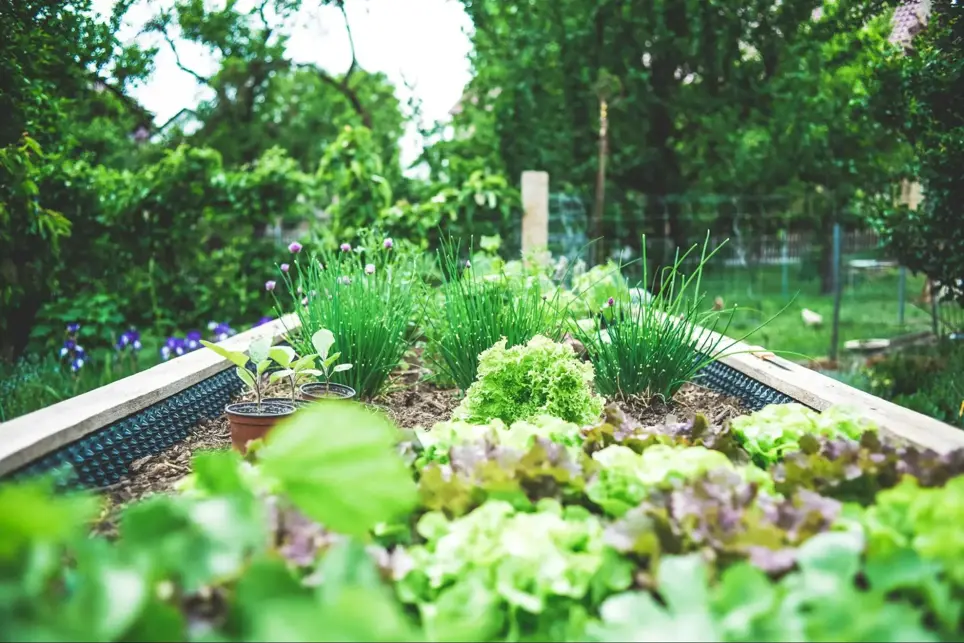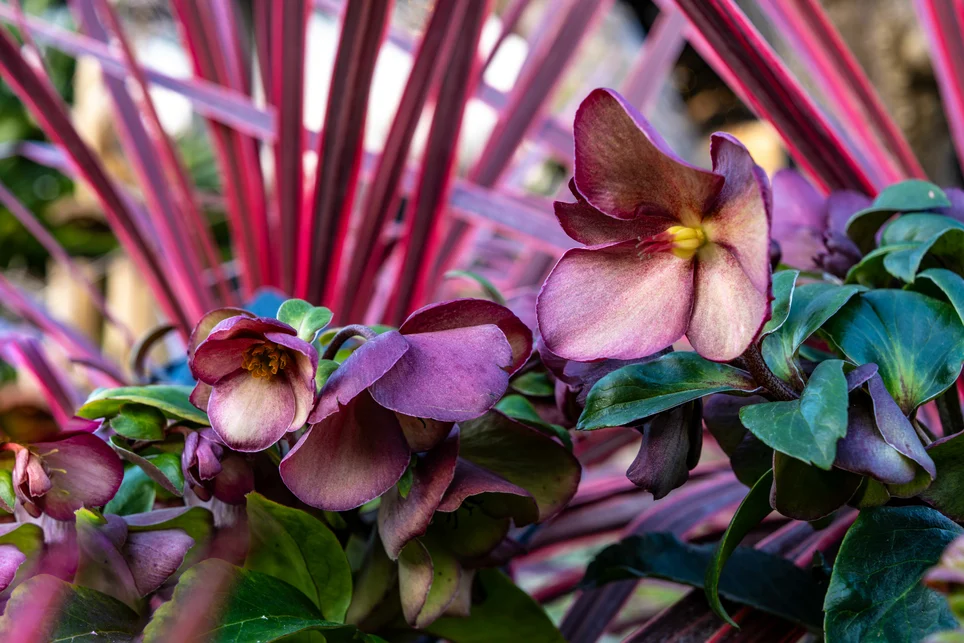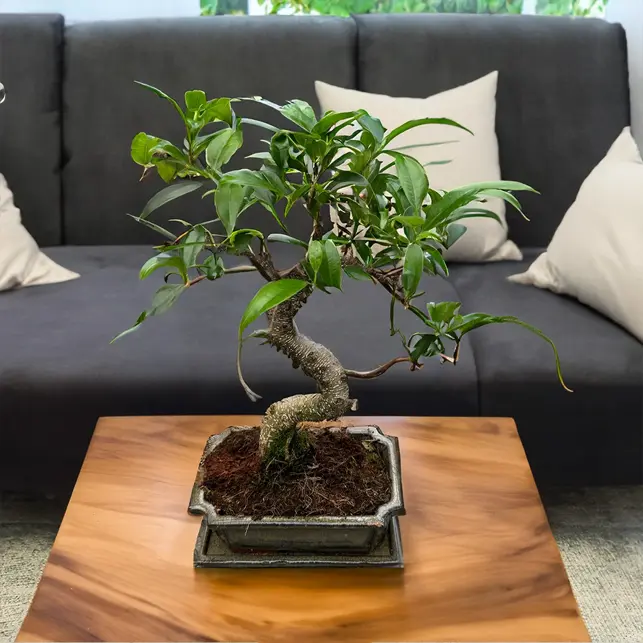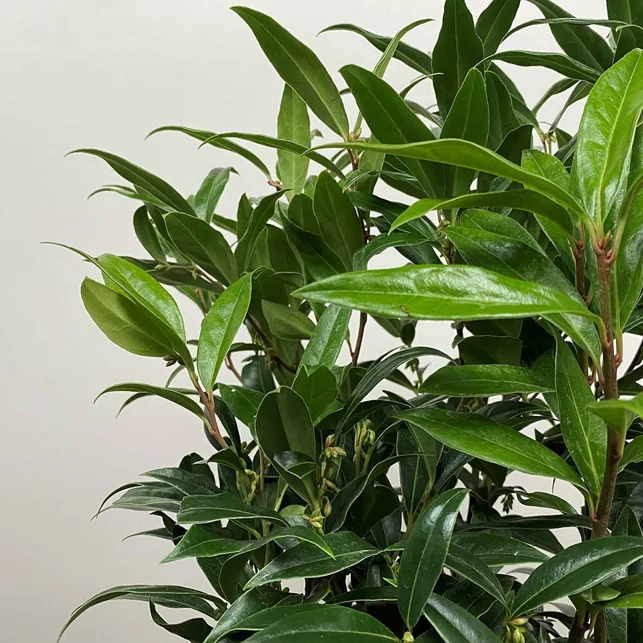
Modern London gardens must contend with limited space, variable light and wind conditions, and the need for productive and attractive planting within limited garden beds.
Whether you're working with a rooftop, balcony, containers, community plot or small backyard, smart layout and plant choices can maximise yield, boost biodiversity, please the eye, reduce maintenance and support pollinators.
Here's our guide to creating the perfect garden layout for your urban space.
Need help crafting your garden planting design? Boma’s Premium Garden Design & Planting Service includes expert planting schemes tailored to your specific taste.
What Makes the Best Garden Planting Layout For London’s Urban Spaces?
1: Rooftop Gardens: Sky-High Oases
Layout & Design Essentials
- Weight distribution matters: Place heavy containers near load-bearing walls or beams. Use lightweight growing mediums (bare soil mixed with LECA beads or perlite) to reduce weight. Consider a "false" deck floor so planters rest on surrounding walls for better weight distribution.
- Wind protection: Roof terraces are often fully exposed. Install slatted or mesh screens as windbreaks - these filter wind better than solid walls. Plant in varying heights to create sheltered "garden rooms" and place taller plants on the north or windward side.
- Smart container choices: Use sturdy, lightweight planters (fibreglass, powder-coated steel or plastic) that retain moisture without adding unnecessary weight. Large containers need less frequent watering than several small ones.
- Go vertical: Install trellises and wall planters for vines and climbers (peas, runner beans, climbing ornamentals) to maximise limited space while providing shade and privacy.
Best Plants for Rooftop Gardens
For a thriving rooftop garden, choose companion plants that can handle exposure and variable conditions:
- Edibles: Dwarf varieties of tomatoes and beans work exceptionally well. Herbs like rosemary, thyme, and sage are excellent year-round options. Consider small fruits like strawberries that spill beautifully from containers.
- Ornamentals: Choose wind-resistant and drought-tolerant plants like ornamental grasses (Festuca), hardy succulents, and Mediterranean shrubs (lavender, santolina). These plants typically have small, greyish or waxy leaves that resist sunburn and water loss.
- Structural plants: For year-round interest, incorporate evergreens like Viburnum tinus and juniper, which provide consistent structure and can withstand rooftop conditions.

2: Balcony Gardens: Small but Mighty
Making Every Inch Count
- Space optimisation: Use vertical space with hanging baskets and railing boxes. Employ tiered shelving and keep larger pots low on the floor for stability against wind.
- Vertical gardening: Install wall planters or climbing frames - even a narrow balcony can support a tomato plant or climbing beans growing up a mesh against a wall.
- Multi-level planting: Use plant stands or stacked planters to have several pots one above another, allowing lower plants to share shade from taller ones while maximising your growing space.
Our pots and planters collection offers lightweight options perfect for balconies, from railing planters to stackable systems that make vertical gardening easy.
Best Plants for Balcony Gardens
- Compact edibles: Focus on dwarf beans, bush tomatoes, and container-friendly salad crops. Herbs like basil, parsley, and mint are ideal with their shallow root systems.
- Colourful displays: Brighten your balcony with geraniums, petunias, or fuchsias. Climbing vines like clematis create green privacy screens.
- Pollinator-friendly plants: Even small balconies can attract bees with clusters of lavender, catmint, or salvia. Group the same flowers together to make it easier for bees to forage.

3: Container Gardens: Versatile and Mobile
Strategic Container Placement
Whether on patios, courtyards, or doorsteps, container gardens offer flexibility and impact:
- Material matters: Choose containers based on your needs. Plastic or fibreglass containers are lightweight and retain moisture, while terracotta pots offer classic appeal but dry out faster. You can also opt for bold and bright glazed pots for a brighter splash of colourful interest. For root crops and larger plants, opt for containers at least 30-50cm deep.
- Strategic grouping: Create "garden rooms" by clustering pots of varying sizes with tall plants at the back (or centre) and trailing varieties hanging over edges. This creates visual interest and makes maintenance more efficient.
- Companion planting: Combine compatible plants in single containers - like lettuce with radishes and marigolds, or tomatoes with basil. This maximises space and can improve plant health naturally.
Best Plants for Container Gardens
- Versatile edibles: Nearly any vegetable can thrive in containers with the right size pot. Strawberries, bush tomatoes, and lettuce are container favourites. For a continuous harvest, practice succession planting - as one crop finishes, replace it with another.
- Mediterranean herbs: Rosemary, thyme, and oregano are ideal for containers as they're drought-tolerant and provide year-round interest.
- Pollinator-friendly options: Dedicate containers to bee-friendly plants like lavender, sedum, and flowering herbs. Even chives with their purple blooms attract beneficial insects.

4: Community Gardens: Shared Spaces, Shared Benefits
Collaborative Design
- Organised plots: Create raised beds approximately 3-4 feet wide to allow planting from both sides. Design clear pathways between beds for easy access with wheelbarrows or for wheelchair users.
- Shared resources: Include a communal watering system, compost bins, and seating areas. Designate a wildlife corner with native plants to support biodiversity.
- Crop rotation planning: Organise plots for rotation (legumes one year, brassicas the next) and succession planting. Group similar crops together for easier maintenance.
Best Plants for Community Gardens
- High-yield vegetables: Focus on seasonal vegetables that benefit from collective care - potatoes, carrots, cabbage, and beans. Include perennial crops like asparagus and rhubarb for long-term harvests.
- Communal fruit: Plant dwarf fruit trees, olive trees or berry canes in dedicated areas. These benefit pollinators and provide large yields that can be shared among gardeners.
- Beneficial borders: Edge vegetable beds with flowers like sunflowers, nasturtiums, and marigolds to attract beneficial insects and create visual appeal.

5: Small Backyard Gardens: Integrated Beauty
Smart Space Planning
- Zone planning: Divide your space logically - perhaps an eating patio, a small lawn, and planting beds. The perfect vegetable garden layout or fruit bed will be positioned to receive maximum sunlight (typically south or southwest facing).
- Edible landscaping: Blend food plants with ornamentals for both beauty and function. Use fruits, vegetables, and herbs as focal points - espaliered fruit trees against walls or herb spirals as garden features.
- Vertical opportunities: Install arches or pergolas for vines like runner beans or grapes. Wall trellises maximise growing space without taking up precious ground area.
Best Plants for Small Backyards
- Dual-purpose plantings: Combine annual vegetables with attractive perennials. Plant lettuce or basil alongside ornamental plants, or parsley and chamomile among bedding plants.
- Fruit trees and berries: Small fruit trees (pruned as ornamentals or espaliered) provide spring blossoms and summer fruit. Berry bushes work well at garden edges.
- Pollinator-friendly natives: Include native wildflowers or well-known bee-attractors like buddleia, catmint, and heather. Plant spring bulbs like crocus in lawns or borders to help early-season bees.

Features To Consider For Key Planting Layout Designs
| Feature | Balcony Gardens | Rooftop Gardens | Small Backyard Gardens |
|---|---|---|---|
| Space | Very limited (typically 3-10 m²) | Moderate (10-50 m²) | Variable (15-100 m²) |
| Weight Considerations | Critical - limited weight capacity | Very important - structural assessment needed | Not a concern |
| Wind Exposure | High - especially on higher floors | Very high - often requires windbreaks | Moderate - usually sheltered by buildings/fences |
| Sunlight | Variable - often limited by building orientation | Excellent - typically full sun exposure | Variable - may have shaded areas from trees/buildings |
| Best Container Types | Railing planters, hanging baskets, lightweight pots | Lightweight but sturdy containers, raised beds | All types - in-ground beds, raised beds, containers |
| Ideal Plants | Compact herbs, dwarf vegetables, trailing flowers | Drought-tolerant varieties, Mediterranean herbs | Mix of ornamentals and edibles, fruit trees, berries |
| Water Management | Hand watering or small drip systems | Irrigation systems often necessary | Various options - hoses, sprinklers, drip systems |
| Privacy Options | Climbing plants, tall container plants | Green screens, decorative panels | Hedges, trees, fences, pergolas |
| Maintenance Level | Medium - frequent watering needed | High - exposed conditions require more care | Variable - can be designed for low maintenance |
Key Benefits of Thoughtful Garden Layouts
Regardless of your garden type, a well-designed layout offers multiple advantages:
- Maximised yields: Strategic planning (vertical growing, companion planting, succession cropping) helps produce more food from limited space. Deep containers allow proper root development, while interplanting fast-growing crops between slower ones keeps beds productive.
- Enhanced biodiversity: Even small gardens can become wildlife havens. Diverse plantings of flowers, herbs, and vegetables create layered habitats that support bees, butterflies, and birds in urban settings.
- Aesthetic appeal: Thoughtful designs create visually striking spaces that enhance your living environment. Colourful plantings, varied textures, and seasonal interest make your garden a joy to experience.
- Lower maintenance: Smart choices like drought-tolerant perennials, mulched beds, and grouped plantings with similar water needs reduce workload. Companion planting naturally deters pests, while choosing the right plants for your conditions means less intervention is needed.
Getting Started With Your Dream Garden Layout
For more personalised advice on creating the perfect layout for your specific space, visit our garden centre in person. Our experienced staff can help you select the right plants and containers to make your urban garden thrive.
We also offer a number of key planting services, including a Premium Garden Design & Planting Service where our experts can create a custom planting scheme for your space, Container Planting Service for ready-to-display pots, and seasonal Garden Makeover Services to keep your garden looking its best year-round.
Whether you're transforming a tiny balcony or redesigning a community plot, thoughtful layout is the key to a garden that's both beautiful and productive. Start planning your perfect green space today!
Visit our London Garden Centre with its stunning displays to experience our full collection of plants and garden supplies, perfect for urban gardening.

Garden Layout Ideas Popular Questions
What is the most efficient garden layout?
The most efficient garden layout uses vertical growing, companion planting, and succession cropping to maximise space, yield, and biodiversity. Grouping plants with similar needs and using containers or raised beds improves access and reduces maintenance. For a low-maintenance garden layout, choose drought-tolerant perennials, mulch heavily to retain moisture and suppress weeds, and place high-care plants near your watering source or seating areas for ease of access.
How many plants should I have in my garden?
The more plants you have, the more resilient, biodiverse, and visually appealing your garden becomes, as long as they're chosen wisely for your space, light, and soil conditions. Avoid overcrowding by following spacing guidelines for each plant, but aim to fill gaps with ground cover, herbs, or pollinator-friendly flowers to make the most of every inch.
What is the best way to arrange plants in a garden?
Arrange taller plants at the back or windward side, shorter ones at the front, and use vertical supports for climbers. Group plants by water and sunlight needs, and consider using companion planting combinations to boost plant health naturally.
What’s the best direction for a garden to face?
A south-facing garden is generally the best, offering the most consistent sunlight for productive growth. Southwest-facing is also excellent, while north-facing gardens may require shade-tolerant plants and careful bed placement.
What are the three golden rules of garden design?
- Right plant, right place – match plants to sun, wind, and soil conditions.
- Layer and zone – use vertical space, group by size and function.
- Think structure first – plan pathways, containers, and key focal points before planting.
What is the best way to arrange your garden?
Divide the space into functional zones (e.g. patio, beds, pathways), use vertical structures for height and privacy, and blend edibles with ornamentals. In small or urban spaces, raised beds and grouped containers work especially well.







